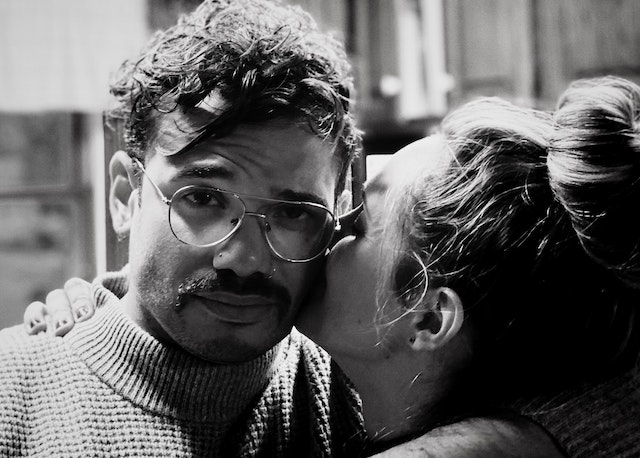
Why Does The Iliad Start In Medias Res?
Since Homer started The Iliad with an argument, storytellers have been using a powerful technique to get the reader into the story with the first scene. Homer wrote in Greek, but the phrase in medias res (in the middle of things) was coined by the Roman poet Horace.
When writers begin things in the middle, they skip right past Once upon a time to plunge the reader into things that are already happening.
No intro. No backstory. No weather description. No vast setting narrative. No counting the buttons on the hero’s coat. None of that. Action is happening, and the reader is right there.
Emotional Engagement Pulls Readers In
The technique of starting in medias res has worked for thousands of years because it grabs readers’ attention. Something exciting or at least disturbing is happening to the protagonist, and the reader wants to know what the outcome will be.
This technique is powerful because it gets the reader to care right away. They want to know the outcome. Will the hero win or lose? Even though the incident may be small, the fact that the protagonist is in action drives the reader to find out more.
Action is a story pivot. Each time a character takes action, something will change. And that something drives the story forward. What better way to start a story than driving the reader to continue reading to find out what happens than with action?
Start Your Story in the Middle of Things
Start your story with a scene that has a strong emotional core. You start your reader on a journey where they care about your protagonist from the start. As the writer, you know the whole story of what came before and why the hero is in this situation. Now give it the emotional pull that pulls your reader in.
Dilemma: Depending on your genre, because you are validating your reader’s genre expectations, this could be a tough choice or a life-threatening situation.
Out of the Ordinary: Your hero performs some activity that is outside everyday activities, like digging a deep hole in the dead of night.
The writers at MasterClass recommended:
Choose a climactic moment, conflict, argument, fight, revelation—anything that denotes some chain of events have occurred in this world leading up to the pivotal moment.
The main idea is activity that raises questions. Who will win the argument? Will the heroine escape from the bully? Can the hero climb back up the cliff without falling? The opening is charged with emotion and significance.
For the reader, you add to the excitement by making them wait to know not just the outcome but also the explanation of why it is happening. You’re giving them a double hook.
Your opening scene must be integral to the story. Otherwise, your opening will feel tacked on for a thrill factor. This does not work. It’s like story clickbait. As soon as your reader realizes the opening scene was a false hook, they will stop reading. The opening scene must be relevant to your story.
Make the Action Integral to the Story
Along with getting the reader involved and caring about your protagonist, the first scene, even though it starts in the middle of things, must be true to the story, indicate the genre, and give your reader a first glimpse of your protagonist in action, all while raising questions in the reader’s mind.

The reader wants to know the outcome and invests immediately at the beginning of the character’s arc. Now the reader wants to know how the situation arose, why the hero is at odds with the other character, and who will gain from the scene’s resolution.
You are introducing the narrative point of view, the main character, the genre, and the tone.
Your Hero Up Close
Starting in medias res allows you to introduce character traits like the way they speak, how they think, and how they act. Experiencing your character in action tells the reader they will enjoy following your hero through the rest of their journey.
Use the opening scene to display traits that will operate later in the story. This isn’t the inciting incident that pushes your protagonist toward committing to the main story. This is an introduction to who they are and how they conduct themselves in their everyday world.
Adding Details In Medias Res
Although focusing on action, your story beginning doesn’t need to overlook details. You add the details in small drips rather than long narrative passages. You want those details to ground the reader in the story setting.
Your story may open with your hero on a mysterious phone call or hanging from a cliff, but you can still add details. Your reader wants him to get to safety. While he’s reaching and scrambling, he still sees what is around him.
- Below is the Colorado River twisting through the valley, Pacific ocean crashing against boulders, woods of Virginia crawling with three kinds of poisonous snakes
- Up above the sky is filled with storm clouds, blazing in sunlight, thick with fog
- His sturdy hiking boots, Ferragamo loafers, trusty sneakers scrabble for a toe hold
- His knife, camera strap, new Nike jacket catches on a rock
- The new moon, rising sun, slanted afternoon light illuminates a tree root just out of reach
- He grazed his smooth brow, graying temple, wrinkled cheeks on a rough outcropping
You get the idea. You don’t need long narratives to give your reader information about your hero’s origin, occupation, age, or readiness for the situation. Focus on the action while adding details bit by bit.

Save Backstory for Later
Don’t worry about backstory for now. Your details will give your reader enough hints about your protagonist to get them through the opening scene. You have the following chapters and the rest of the novel to show how your character got into this situation. That’s part of the intrigue of starting in medias res.
You may be tempted to explain in the scene. Refrain. Make the scene so emotionally involving, your reader wants to know the backstory, but not now. You are writing an action scene, even if it’s dialogue. An information dump right now will take the reader out of the story.
Your goal is to get the reader involved in the story.
Don’t Make It a Mystery
Don’t confuse plunging into the middle of action with not providing enough information. Your reader needs to know who the main characters in the scene are. Use dialogue and/or action to show what’s at stake and why they should care about your hero.
There’s a difference between too much exposition and no exposition at all. You need to include basic elements, so the reader is grounded in your story.
Make sure you provide:
- Clear characters that have a role in the scene, who they are and why they are there
- A setting that grounds the reader in place, telling them where in the world the story takes place
- Clear action where each character has a purpose for what they say or do
- Stakes for the outcome
Clarity gives your reader a reason to care about the characters and the action.
Your Scenes Need In Medias Res Too
It doesn’t take long in the writing world to hear the scene-writing adage start late, leave early. That means start your scene at the latest possible moment.
You don’t need to show your character getting up, brushing their teeth, finding the car keys, driving to the scene, ordering coffee to go, driving across town, parking in front of the apartment building, etc. before she meets the guy she thought was her dream man until... now she’s going to confront him on his bad behavior. That’s starting early. Better to start late.
She shows up angry. That’s how you start the confrontation scene.
Have you ever read a book that starts well and then seems to peter out? It could be because the writer doesn’t know the technique of starting scenes with emotional impact. Each scene needs to move the story forward. Get to your character’s beginning emotional state and then let the action begin.
Use in medias res as you edit your first draft. Check each scene’s beginning to make sure you start at the latest moment to get to the emotional context. Just like the story beginning, your reader will want to know what happens next. You’ll raise the questions that keep them reading to find the answers.
A Literary Technique That Boosts Your Story
Starting in medias res is time tested. For millennia. You can’t go wrong employing this technique in your writing craft. From the beginning, and scene by scene, you’ll continue to capture your reader’s attention, bringing them front and center into your story.
Think of a pivotal event and then plunge your character into a dilemma. Sprinkle in background details, avoiding long narrative descriptions. Get to the action and the emotion.
You’ll add immediacy and empathy that are hard for your reader to resist.


